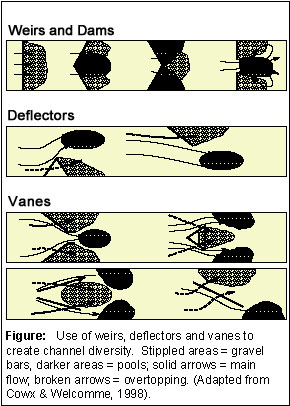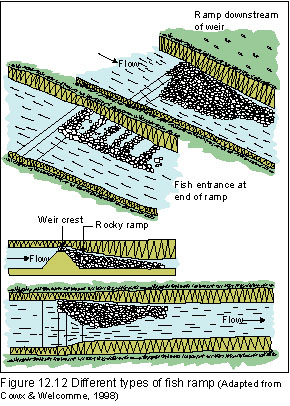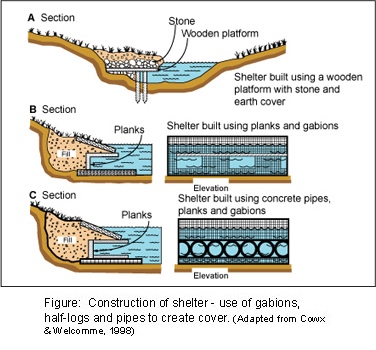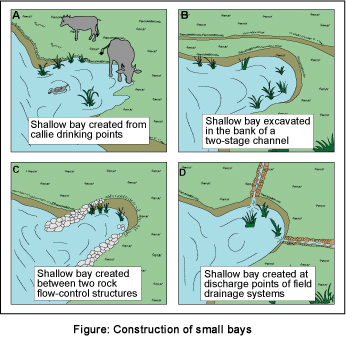Restoration
of the Main Channel--
The following methods can be followed to restore channel diversity where
rivers have been converted by straightening and bank correction. Examples
of restoration techniques are provided for small rivers, streams as well
as for larger rivers.
Small Scale Restoration of Channel Diversity
 |
Many of the restoration techniques
for small rivers are simple and cost-effective. Differences in depth,
current speed and associated differences in substrate can be produced
by installing weirs, dams and deflectors at appropriate angles in
the channel. The weirs and dams can be made of concrete, gabions
(wire boxes filled with small rocks), or with more natural materials
such as logs or rocks. The dams can also recreate a degree of meander
structure within the channel.
|
 |
In smaller streams, submersible
dams made of rocks, logs, sheet piling or concrete can restore pools
and riffles. The dams are placed across the river and rely on the
increased current to scour gravel downstream. Alternatively, gabions
can be sunk into the river below the dam and covered with rocks.
Dams are also used to anchor gravel placed artificially above the
dam. Riffles are especially important for breeding by certain species
of fish that deposit their eggs amongst the rocks, where they benefit
from the flow of well-oxygenated water.
|
 |
Shelter can be created under the banks of small rivers from gabions, pipes and wood. Small trees placed horizontally can also form an overhang. Many fish and other aquatic animals rely on sheltered areas as refuge, including undercut banks and tree roots. |
 |
Small, shallow bays cut into the banks provide
nursery areas for juvenile aquatic organisms.
Vegetation should be used wherever possible instead of hard engineering (e.g., construction using man-made materials). Trees and vegetation can stabilize banks and also provide shade and structure. Appropriately planted, they can also serve as deflectors. Riparian vegetation can also absorb much of the nutrients that seep into rivers through sub-surface flow, and as such are a means of controlling eutrophication. |